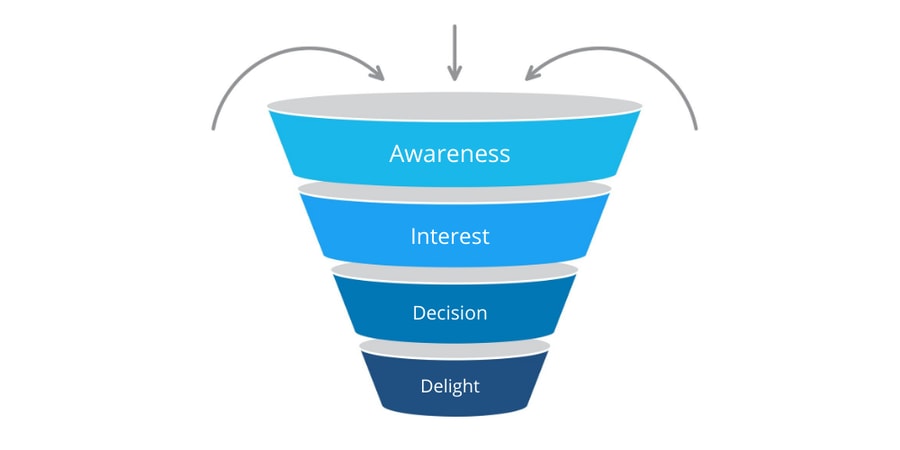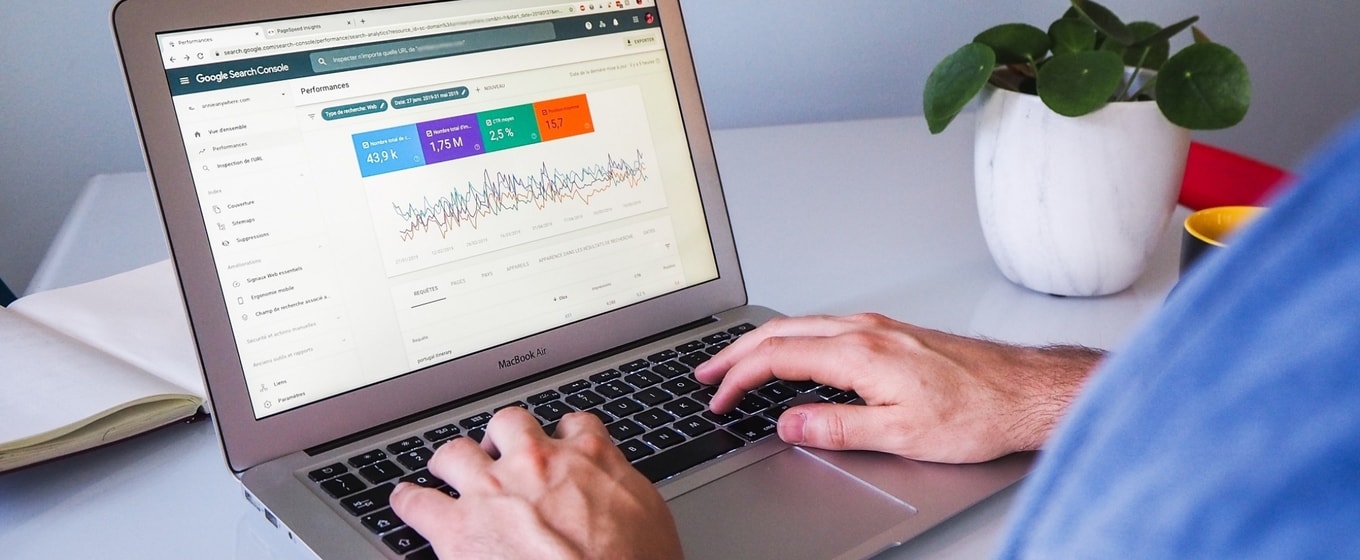Many business leaders focus on raking in engagement across their social channels and building their website's click-through rate, but a big online following doesn't necessarily translate to lots of sales.
If you're looking to improve your conversion rate, you may consider using your audience analytics to predict consumer behaviour. By mapping out a pictorial representation of the customer experience from the first click to the final purchase, your understanding of buying habits could help you stay ahead of the competition.
Optimizing your sales funnel, therefore, can be key to getting the most value from your marketing efforts.
What's a sales funnel?
If you're new to marketing and struggling with your customer journey, a sales funnel is an invaluable resource. Also known as a marketing funnel, this handy diagram can help you map out the process your customer undergoes when purchasing an item or a service from your business.
In essence, a sales funnel works in the same way as a regular funnel. Website visitors enter the top of the funnel, which is the widest point, when they land on your site or social media profiles. As the funnel narrows, visitor numbers dwindle, and those left are converted from browsers to buyers.
To implement this method for your business, plot a diagram that reflects your company’s lead hooking strategy. Or, you can use online tools that analyze and visualize data across site pages, such as Google Analytics or Finteza, to get a more accurate representation of your customer journey.
Using this inverted pyramid method can help you effectively track and predict your audience behaviour and increase your chances of securing sales leads.
The four stages of a sales funnel
The easiest way to understand a sales funnel is to split it into four sections - the awareness stage, the interest stage, the consideration stage, and the decision stage.

As visitors land on your site, they enter your sales funnel, which is split into four key stages
From the top to the bottom of your funnel, your initial prospects are converted into sales leads. While the decision stage may look like the most important stage, it’s actually the middle of the funnel that’s essential to improving conversion rates. This is where your prospective buyer's interest must be maintained and nurtured.
How to optimize your funnel at each level
The key to creating a profitable awareness-decision pathway is recognising that each step has different characteristics. They will also be longer or shorter depending on your business offering.
For example, if your product is expensive, your consideration and decision stages are likely to be longer compared to cheaper purchases.
Awareness
If you want to increase your chances of securing a sale, the hard work starts at the awareness stage. The more visitors you can attract at this stage, the more likely you are to convert sales further down the line.
At this stage, it’s all about brand awareness. To buy your product, consumers need to know that it exists and could be the perfect solution to their problem. The more a potential lead sees your brand, the more likely they are to consider purchasing from you.
Utilize knowledge about your demographic to target the right prospects and attract them to your product or service. You could do this through SEO tactics, like creating keyword-focused content to rank at the top of their search results, or by dominating your target niche’s most popular social platform with targeted ads.
Interest/Consideration
So your prospect has found your brand and is considering what to do next. At this point, engagement is critical if you want to hold their interest. Most importantly, you need to prove your services are worth their time and money by highlighting your USPs and building trust.
To keep moving your customer through the sales funnel, it’s time to put those retargeting tactics into action. With PPC banner ads, you can target lookalike audiences and rake in consumers looking for a similar product or service to what your company offers.
Better still, try to incorporate direct response ads for a chance to capture useful data about potential leads. With an email address, for example, you can increase brand interaction by adding them to your mailing list.
Decision
Once a lead has reached the decision stage, there’s a high chance that they are looking to buy. However, there's still work to do before securing this sale.
To ensure success at this stage, you need to turn your focus to your website. Make sure your product pages are fully optimized, featuring positive reviews, eye-catching pictures, and persuasive copy that enhance the user experience.
Delight
After closing a sale, the difference between gaining a one-time buyer and a loyal customer depends significantly on your aftercare and retargeting strategy.
This is your chance to delight your customers and build a relationship that encourages them to purchase again. We all know that nurturing a customer is more cost-effective than acquiring a new one, so it’s time to roll out that metaphorical red carpet.
Offering exclusive perks, including discounts, free samples, or rewards for referring a friend, is a popular tactic for incentivising repeat business. The possibilities are endless and will rake in a fantastic ROI.
If your growth efforts have stalled during the Covid-19 pandemic, you're not alone. Incorporating a sales funnel into your marketing strategy could, however, give you a better understanding of your demographic and boost your performance.
Incorporating a sales funnel into the future of your business will improve your targeting technique as you move forward, putting you at the top of the digital high street.
About the author
Rebecca Barnatt-Smith is a multi-media marketing executive for Solvid Digital UK, an SEO agency that is focused on helping small businesses grow. She specializes in writing motivational content for start-up marketers, focusing on improving sales and engagement strategies.









These cookies are set by a range of social media services that we have added to the site to enable you to share our content with your friends and networks. They are capable of tracking your browser across other sites and building up a profile of your interests. This may impact the content and messages you see on other websites you visit.
If you do not allow these cookies you may not be able to use or see these sharing tools.